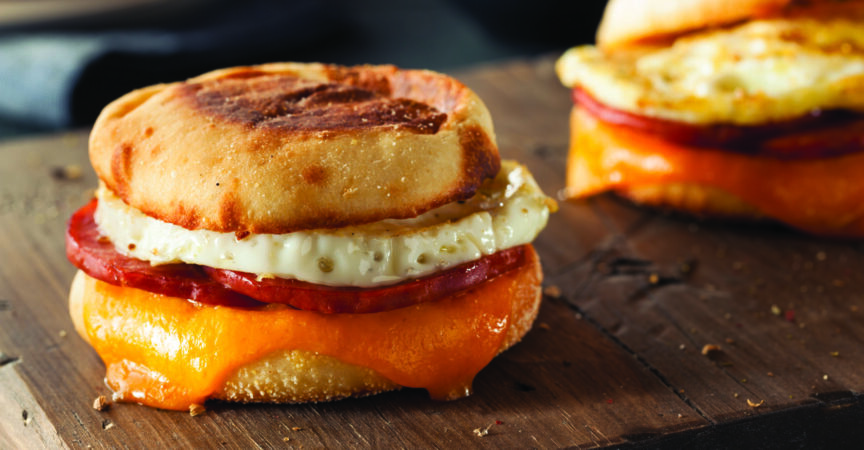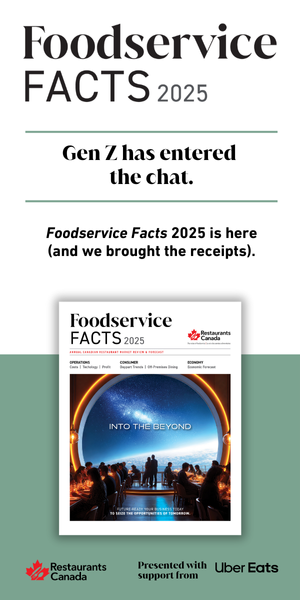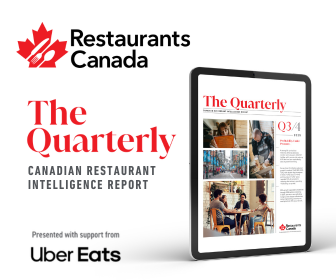MORNING FUEL
What’s Driving Canada’s Breakfast Sandwich Boom?
Breakfast is back in a big way, and the undisputed star of the morning revival is the breakfast sandwich. Once a simple grab-and-go staple, this handheld powerhouse has evolved into a creative, crave-worthy canvas for chefs and restaurateurs looking to stake their claim in the growing morning daypart. As consumer habits shift and operators look for new revenue streams, the breakfast sandwich is proving to be the ultimate fusion of convenience, versatility, and profitability.
The Breakfast Boom
The morning rush isn’t just about caffeine anymore. According to Restaurants Canada’s Foodservice Facts, breakfast is the fastest-growing daypart in Canadian foodservice, with traffic surging by 12 per cent in 2023, outpacing lunch and dinner growth. Fuelled by shifting work habits, the rise of all-day breakfast offerings, and the demand for high-quality, portable options, restaurants are capitalizing on a breakfast surge that shows no signs of slowing down.
A recent survey by the Agri-Food Analytics Lab at Dalhousie University, in partnership with Caddle, reveals that 57.2 per cent of Canadians eat breakfast daily, while another 25.7 per cent consume it multiple times a week. Yet, 5.8 per cent skip it entirely, with Gen Z leading the way in skipping (9.0 per cent) and the Greatest Generation remaining the most consistent consumers (74.8 per cent). Regionally, Newfoundland and Labrador reigns as Canada’s breakfast stronghold (69.4 per cent daily consumption), while British Columbia leads in breakfast skippers (9.0 per cent).
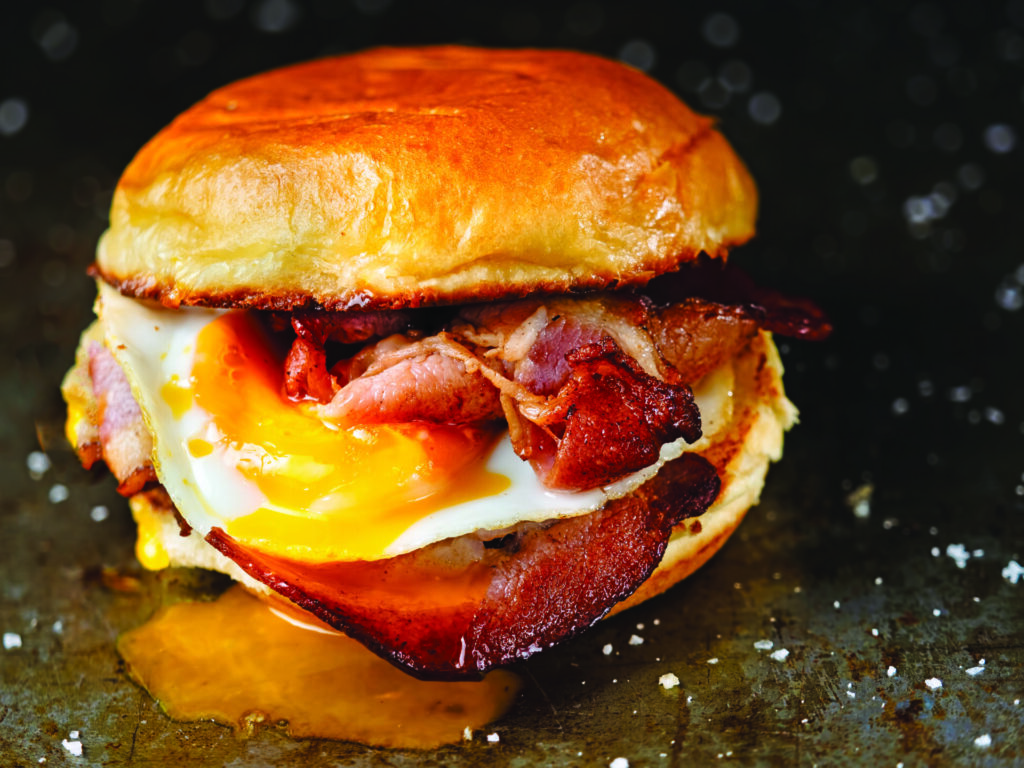
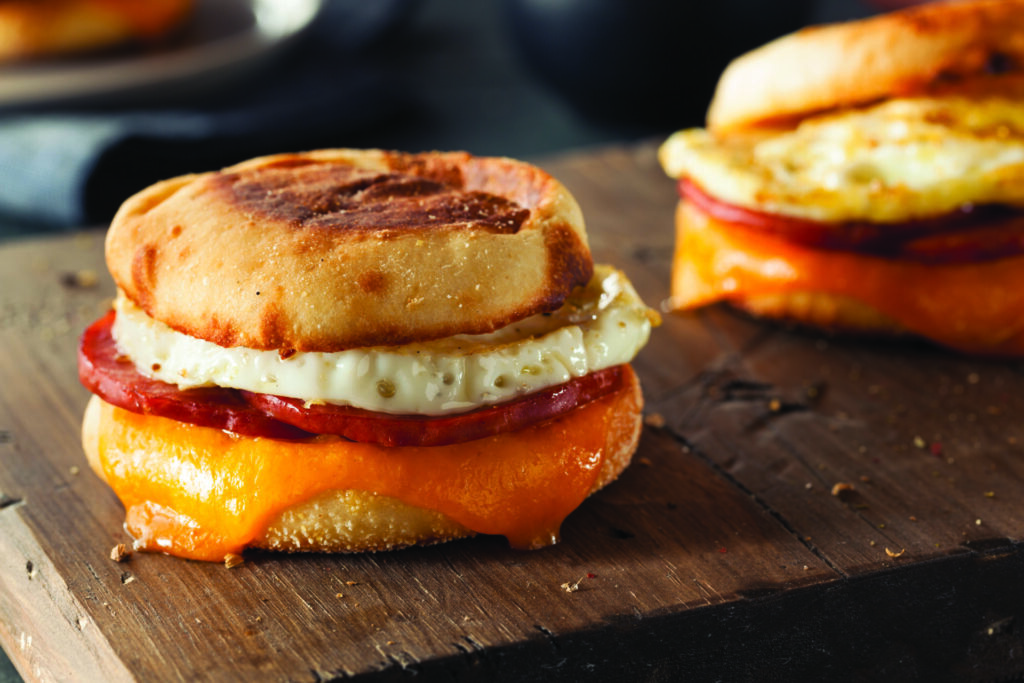
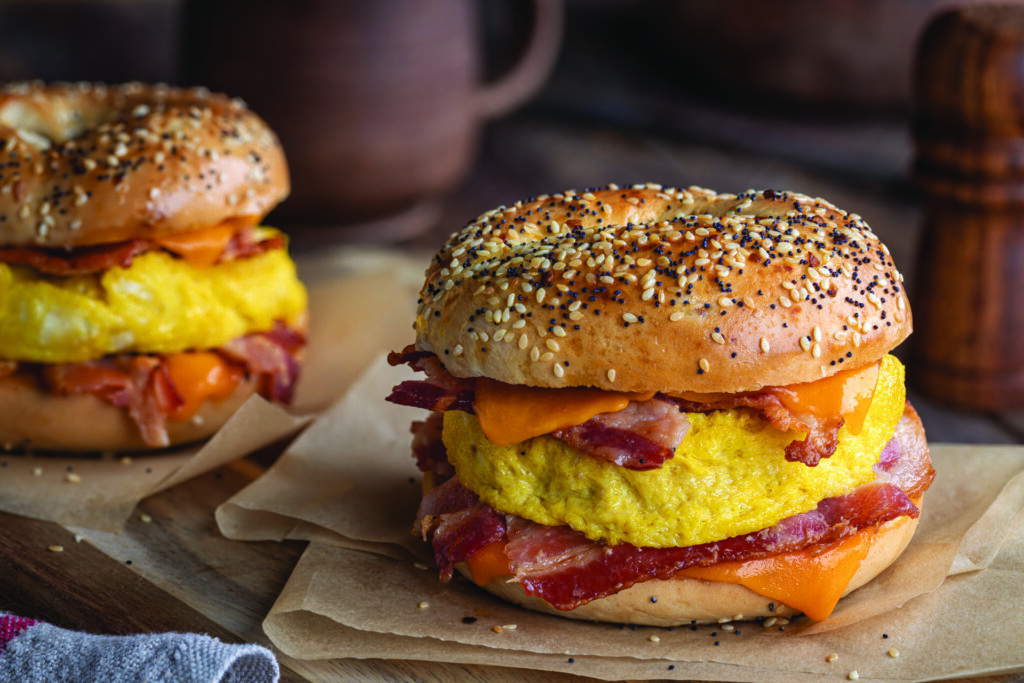
Despite its enduring popularity, most Canadians—80.3 per cent—still eat breakfast at home, and just 2.3 per cent turn to restaurants for their morning meal. That presents a massive opportunity for foodservice operators looking to convert home eaters into loyal customers. The survey confirms that Canadians crave familiar, high-protein, and grain-based options, with toast and bagels (40.6 per cent) leading the pack, followed by eggs with bacon, ham, or sausage (37.5 per cent) and cereal and granola (29.7 per cent). Across all generations, toast and bagels dominate—except among the Greatest Generation, who prefer cereal and granola.
With breakfast traffic climbing 12 per cent in 2023, the morning daypart is a promising daypart ripe for innovation; however, with such a low percentage of Canadians currently eating breakfast at restaurants, the challenge for operators is to disrupt morning routines with irresistible, on-the-go offerings. Enter the breakfast sandwich, an ideal format that delivers portability, protein, and customizability—key attributes that align with what Canadians already eat at home. Fast-casual concepts and independent cafés can differentiate with premium, chef-driven takes, while QSRs and convenience chains can capture volume with speed, consistency, and drive-thru accessibility.
With quick-service giants and independent innovators competing for dominance, the battle for Canada’s best breakfast sandwich is fiercer than ever. Tim Hortons, McDonald’s, and A&W continue to raise the stakes, rolling out premium ingredients, bold menu innovations and aggressive promotions to capture morning traffic. Tim Hortons has upgraded its lineup with freshly cracked eggs and a Farmer’s Breakfast Sandwich with avocado on a brioche bun, while McDonald’s keeps its all-day breakfast strategy front and centre, ensuring fan favourites like the Egg McMuffin remain accessible beyond the morning rush. The chain also announced it had reached its goal of sourcing 100 per cent Canadian free-run eggs for its breakfast lineup. A&W, well known for its commitment to grass-fed beef and antibiotic-free ingredients, has carved out a loyal following with its classic Bacon & Egger and all-day breakfast menu.
Meanwhile, indie hotspots and chef-driven eateries are rewriting the breakfast sandwich playbook, proving that consumers will pay more for high-quality, crave-worthy creations. In Montreal, Passé Composé’s signature Bagel Passé Composé serves up basil cream cheese, Lox Box smoked salmon, fried avocado, red onions, radishes, jalapeño salsa, niçoise, jalapeño and lime yogurt on a St-Viateur bagel. Toronto’s Egg Club (now also in Vancouver and Calgary!) has built a cult following with its thick-cut egg sandwiches on Japanese milk bread with unique combinations like Chipotle Lobster, while Gold Standard in Toronto has gained a reputation for its no-frills, perfectly executed breakfast sandwiches featuring scrambled eggs, bacon (or kale), kosher pickles, aïoli and hot sauce on an English muffin. Clementine Café in Winnipeg turns tradition on its head with its handheld wonder with a spiced lamb patty, jammy egg yolk, Vadouvan curry aïoli, pistachio dukkah with red onion, soft feta cheese and herbs. Saskatoon’s Living Sky Café’s breakfast menu subtly elevates the classic fried egg sandwich with the Sky Sammie, drawing crowds with scratch-made biscuits and farm-fresh ingredients, creating elevated, locally inspired breakfast sandwiches that stand out in a competitive market.
Whether it’s a fast-food heavyweight scaling up its offerings or a small-batch disruptor crafting chef-driven, Instagrammable masterpieces, one thing is clear—Canadians are obsessed with breakfast sandwiches, and the battle for the best one is only getting
more intense.

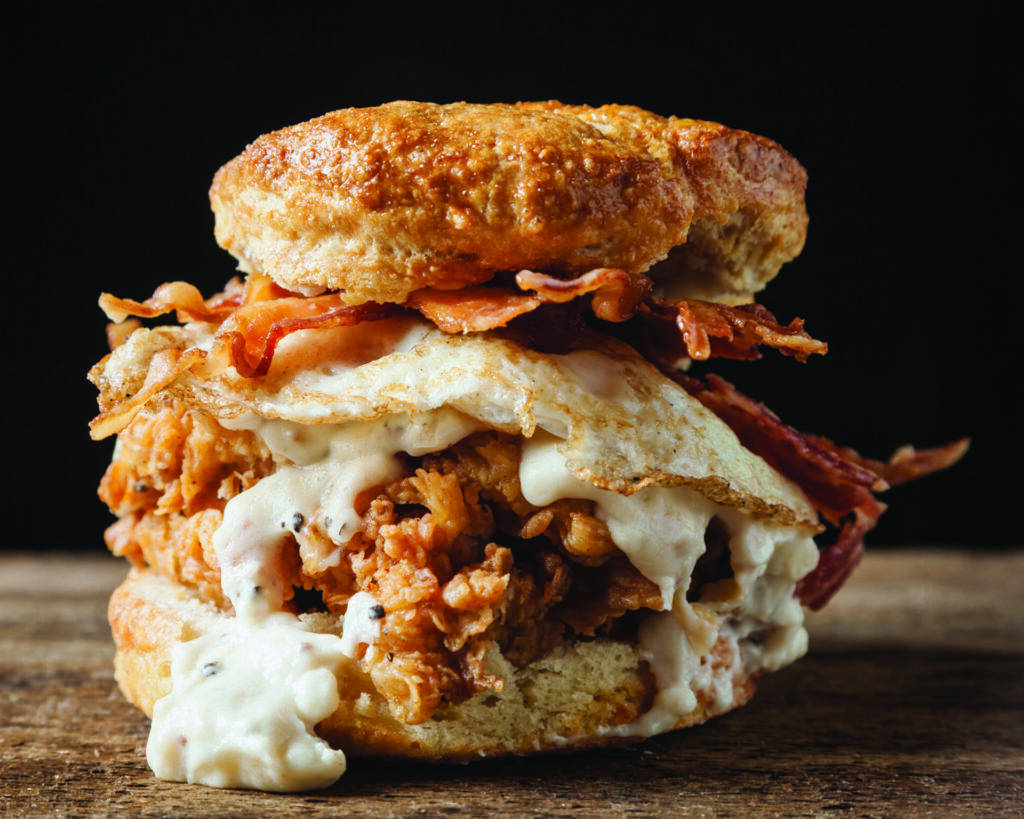
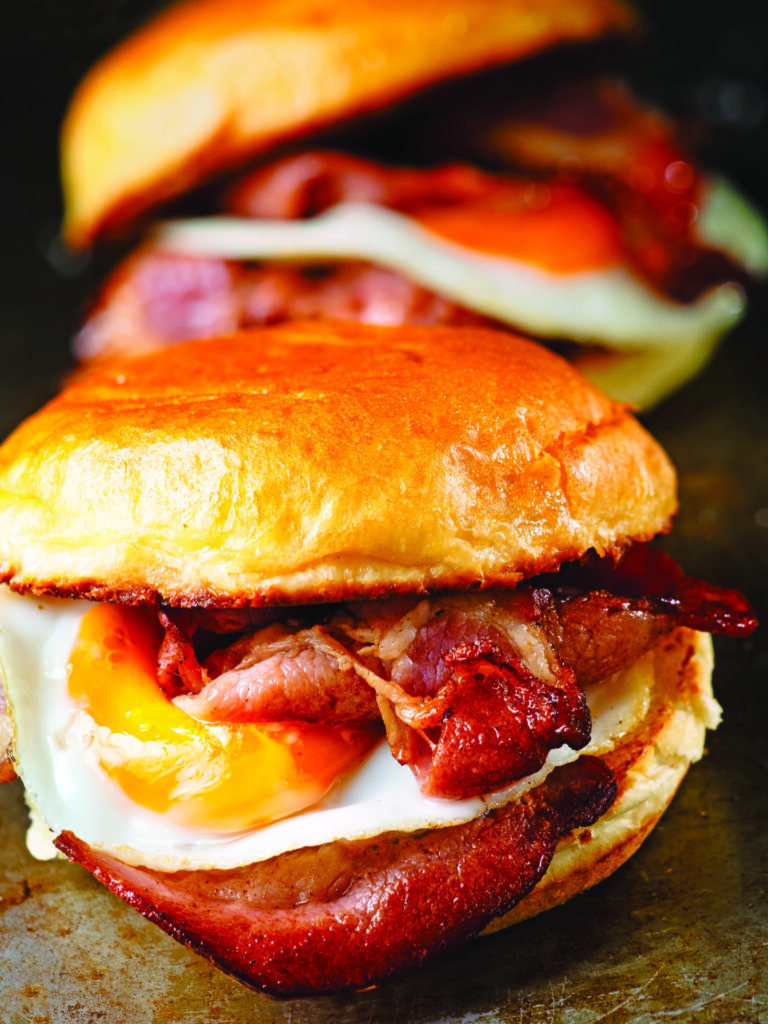
A Canvas for Culinary Creativity
The core of the breakfast revolution is the sandwich. Portable, convenient, customizable, and packed with flavour, it’s a menu MVP that’s redefining how and where Canadians eat their first meal of the day.
The brilliance of the breakfast sandwich lies in its adaptability. While the classic bacon, egg, and cheese on an English muffin remains a fan favourite, today’s culinary innovators are taking things further—introducing bold new flavours, premium ingredients, and global influences that keep customers coming back for more.
Restaurants are elevating the humble sandwich with:
Bread Upgrades: Buttery croissants and brioche, and crispy hash brown buns, house-made biscuits, flat breads and wraps, and milk bread rolls bring texture and a premium touch.
Protein Innovations: Classic bacon and sausage now share the stage with smoked salmon, chorizo, slow-cooked pork belly, and plant-based alternatives.
Egg Evolution: From fluffy scrambled to jammy soft-boiled and crispy fried, the egg
is no longer an afterthought.
International Inspiration: Korean gochujang mayo, Mexican-inspired huevos rancheros sandwiches, and Japanese tamago-style creations bring global flair.
Health-Conscious Takes: Keto-friendly wraps, high-protein and gluten-free options, and veggie-packed iterations cater to an increasingly mindful audience.
The ability to layer textures, premium ingredients and unique flavours has turned the breakfast sandwich into more than just a morning essential—it’s now a restaurant signature, a social media sensation, and a key differentiator in a competitive market. Brands like Toronto-based Egg Club, Gold Standard and Bad Egg, Montreal’s Olive et Gourmando and Passé Composé, or Saskatoon’s Living Sky Café have built cult followings around their high-quality breakfast sandwiches, proving that thoughtful execution can turn a simple concept into a category leader.
As more Canadians embrace breakfast beyond the traditional morning rush, the staying power and convenience of the breakfast sandwich is undeniable. Whether served as a grab-and-go staple, an all-day menu highlight, or the centrepiece of a chef-driven competition, this humble yet endlessly adaptable item is defining the next era of foodservice innovation.



